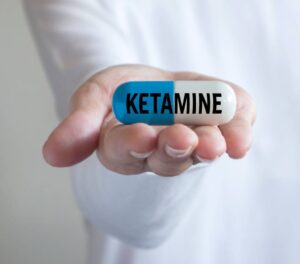Treatment-resistant depression (TRD) presents a significant challenge in psychiatric care, characterized by patients who do not respond adequately to traditional antidepressant therapies. Intravenous (IV) ketamine and electroconvulsive therapy (ECT) have emerged as vital alternatives for managing TRD, offering hope to those who have not benefitted from standard treatments. This article explores the efficacy, mechanisms, advantages, and considerations of IV ketamine versus ECT in the treatment of TRD, providing insight into how these modalities compare in clinical practice.
Understanding IV Ketamine and ECT
Ketamine, traditionally used as an anesthetic, has gained recognition for its rapid-acting antidepressant effects. Unlike conventional antidepressants that target the monoaminergic system, ketamine acts primarily through the glutamatergic system. It blocks NMDA receptors on neurons, leading to an increase in the release of glutamate. This cascade then activates AMPA receptors, ultimately leading to enhanced synaptic plasticity and mood improvement. This mechanism is believed to contribute to ketamine’s ability to provide rapid relief from depressive symptoms, often within hours of administration.
Electroconvulsive therapy (ECT), on the other hand, is one of the oldest and most studied treatments for severe depression. ECT works under the principle that controlled electrical stimulation of the brain, under general anesthesia, can significantly alleviate depressive symptoms. The exact mechanisms by which ECT exerts its effects are not fully understood but are thought to involve enhanced neurotransmission, increased brain-derived neurotrophic factor (BDNF) levels, and changes in brain connectivity and neuroplasticity.
Efficacy in Treating TRD
Both IV ketamine and ECT have shown considerable efficacy in treating TRD. Studies have demonstrated that ketamine can rapidly reduce symptoms of depression within hours, even in patients who have failed to respond to other treatments. This rapid action can be particularly advantageous in acute cases where immediate symptom relief is critical, such as in patients with severe suicidal ideation.
ECT has a well-established track record as a highly effective treatment for severe depression, with remission rates ranging from 50% to 80%. It is particularly beneficial for patients with psychotic depression or those who are pregnant, where certain medications pose risks. While ECT typically takes longer to show effects compared to ketamine—often several weeks—it offers a sustained response, which is a significant consideration for long-term management of depression.
Safety and Side Effects
The safety profiles and side effect burdens of IV ketamine and ECT differ, influencing their suitability depending on the patient’s condition and preferences. Ketamine is generally well tolerated, with transient side effects including dissociation, nausea, dizziness, and elevated blood pressure. These effects typically resolve within hours and are manageable under medical supervision. However, the long-term effects of repeated ketamine use are not well understood, and there is potential for abuse and cognitive impairment.
ECT, while effective, is associated with more significant side effects, including memory loss, confusion, and physical side effects related to anesthesia. The cognitive side effects are particularly concerning for some patients, as they can affect retrograde memory. Advances in ECT technique, such as unilateral electrode placement and pulse waveforms, have reduced these risks but not eliminated them.
Clinical and Personal Considerations
Choosing between IV ketamine and ECT for a patient with TRD involves considering several factors, including the severity and urgency of symptoms, previous treatment history, side effect profiles, and patient preference. Ketamine may be preferred for patients seeking rapid relief from acute episodes of depression or those concerned about the cognitive side effects of ECT. In contrast, ECT may be more appropriate for patients with severe, psychotic, or life-threatening depression and those who have not responded to ketamine.
Conclusion
Both IV ketamine and ECT offer valuable options for the treatment of treatment-resistant depression, each with its distinct advantages and limitations. Deciding on the appropriate intervention requires a thorough evaluation of clinical evidence, careful consideration of patient-specific factors, and a personalized approach to treatment planning. As research continues to advance, further insights will likely refine the use of these powerful treatments, enhancing efficacy and safety for patients grappling with severe depression.



